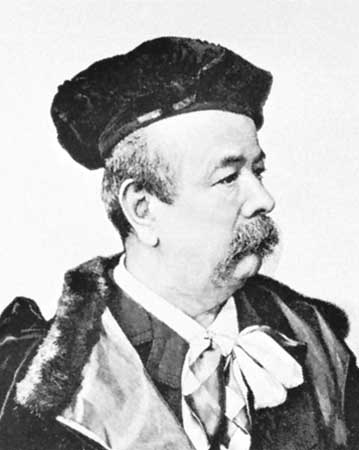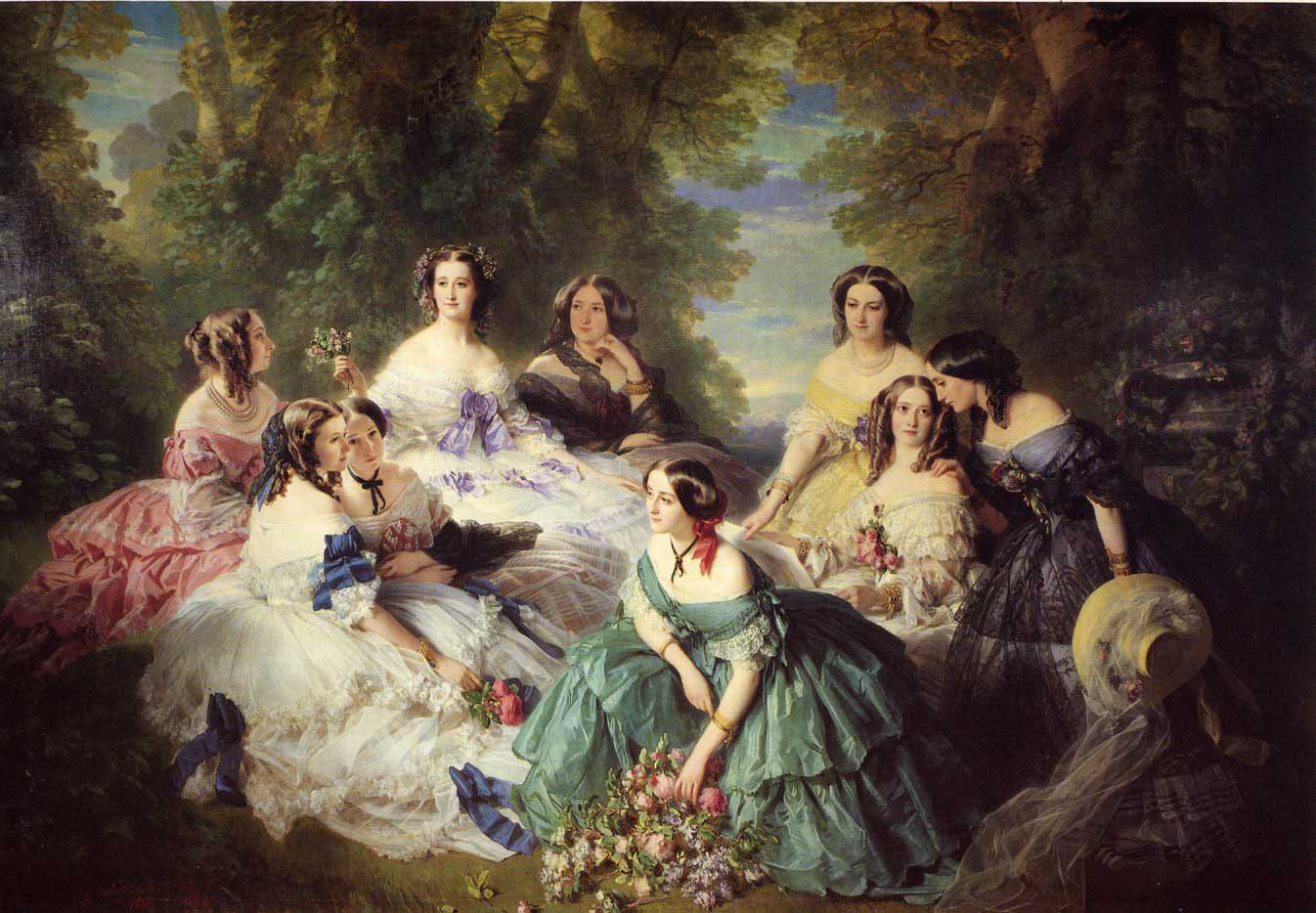

Since Fashion Week is almost here, thoughts turn to fabulous clothes and their designers, people with names like Balenciaga, Givenchy, Dior, Versace, Saint Laurent, Armani.
Do you notice anything odd about that list? They are all men. Well, all right, Chanel ought to be there too, but that doesn’t change the fact that for the past hundred years and more, the famous couturiers have been men.
That really is odd, because until the late 19th century, fashion had been entirely the purview of women. Whether they were called milliners or mantua makers or dressmakers, they were female, and this was the one occupation that was reserved for women.

What changed that?
Charles Worth, the Englishman who made Paris the home of Haute Couture.
Charles was born in 1825 in the town of Bourne in Lincolnshire, the son of a solicitor. He might have expected a career in the law himself, but his father lost all his money through either drink or gambling and deserted his family. At the age of twelve, Charles lost any chance of further education and had to earn a living. He eventually found work in a drapers shop and later as a sales assistant at Lewis & Allenby, a famous firm of silk mercers.
He decided that opportunities in fashion were greater in Paris, so he left for France, and spent a hungry year working at odd jobs and learning French. Eventually he won a place at Gagelin, a very grand shop indeed.
He married Marie Vernet, who also worked at the store, modeling dresses made of the fabrics offered for sale. Charles thought it would make sense to sell dresses as well, and began to design the ones that Marie wore.
Can’t you imagine the conversations?
Customer: “Hmm, that’s a very attractive gown.”
Marie: “Thank you, madame. It is the design of our M. Worth.”
Customer: “Really?” She looks at it, poking and pulling. “Do you think he might make something like this for me?”
Marie: “But of course, madame.”
And so it began.
It was not all instant success, of course. Gagelin did not want to expand the dressmaking sideline, so Worth found a partner with money to invest and the knowledge to run a business. The House of Worth et Bobergh opened in 1858 with a staff of twenty seamstresses.
Success—enormous success—came when the Empress Eugenie became a customer. She not only adored clothes herself, but insisted that all the women at court be well dressed. (There is a story that she withdrew an invitation to a wealthy visiting Am erican family because the woman had appeared somewhere in an ugly dress.)
erican family because the woman had appeared somewhere in an ugly dress.)
Where the empress went, the rest of society followed. Any woman who attended one of the balls or masquerades at court was well advised to do so in a gown designed by M. Worth. That meant thousands of gowns a year.
At first I didn’t think that would be possible. How could twenty seamstresses sew that many gowns in a few months? But then I discovered that the business expanded rapidly. By 1870, Worth et Bobergh had taken over several buildings and employed 1,200 seamstresses.
The fall of the Second Empire in 1871, and the departure of Empress Eugenie, might have been a problem for Worth, but his fame had spread. He dressed the ladies in every court of Europe—and the wealthier ladies of the United States. When the American Buccaneers crossed the Atlantic to capture the titles of Europe, their first stop was Paris, where Charles Worth dressed them for their campaigns.
In Lady Elinor’s Wicked Adventures, my heroine and her mother recognize style when they see it. They stop off at Gagelin’s and buy gowns of Mr. Worth’s design in 1856, long before he is famous. Clever ladies!
The Winterhalter portrait of Empress Eugenie and her ladies doesn't specify that the gowns were by Worth, but I like to think they were.

Comments
interesting!!
What an interesting post, Lillian.
I never thought about all the men designing women's fashion!
As beautiful as the dresses were during that period, I don't think I would've survived way-back-when with all those complicated layers : ) I'd do better with a Star Trek uniform. I've never been good very with keeping in fashion.
Don't worry, Debra. If you
Don't worry, Debra. If you were wearing one of those gowns, you had servants to get you in and out of them, and you never had to worry about keeping them clean while you did the dishes or burped the baby. Someone else took care of that!
This is fascinating, I'm so
This is fascinating, I'm so glad you share these bits of history in such detail here. And I love that you incorporated Mr. Worth's work into Lady Elinor. Facts like these add such depth and texture to a story. What fun. Now I wonder what other historical gems are laced throughout the book! It's like a treasure hunt. :-)
hai
I'm delighted you shared these historical tidbits in such detail since this is intriguing. Additionally, I adore how you blended Mr. Worth's creative output into best place to buy diamond rings Lady Elinor. These kinds of details give a story so much depth and complexity.
Post new comment